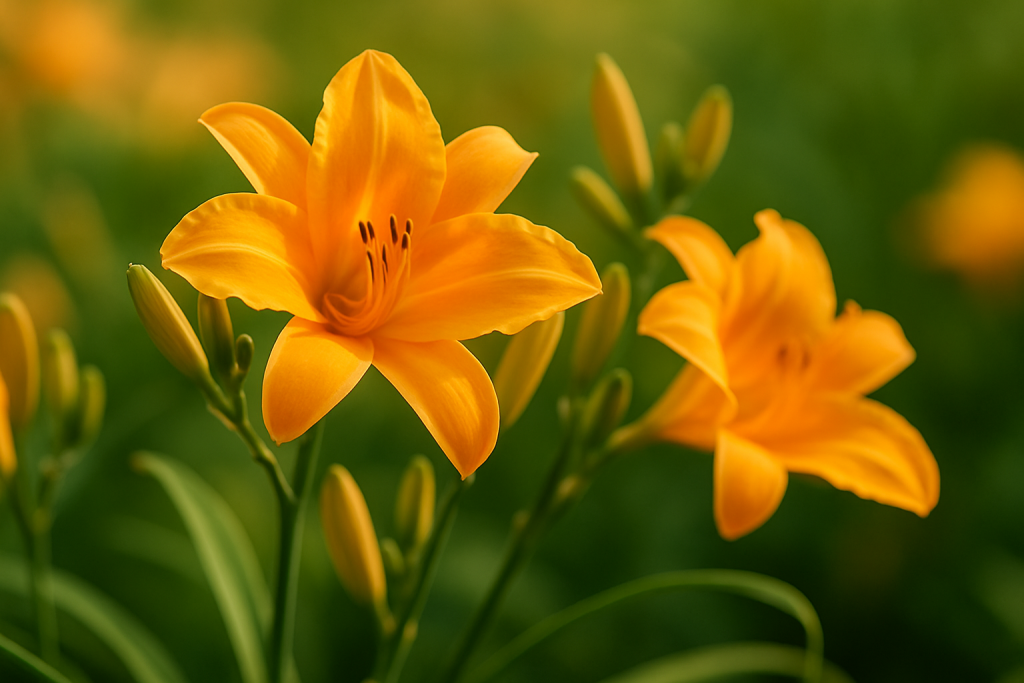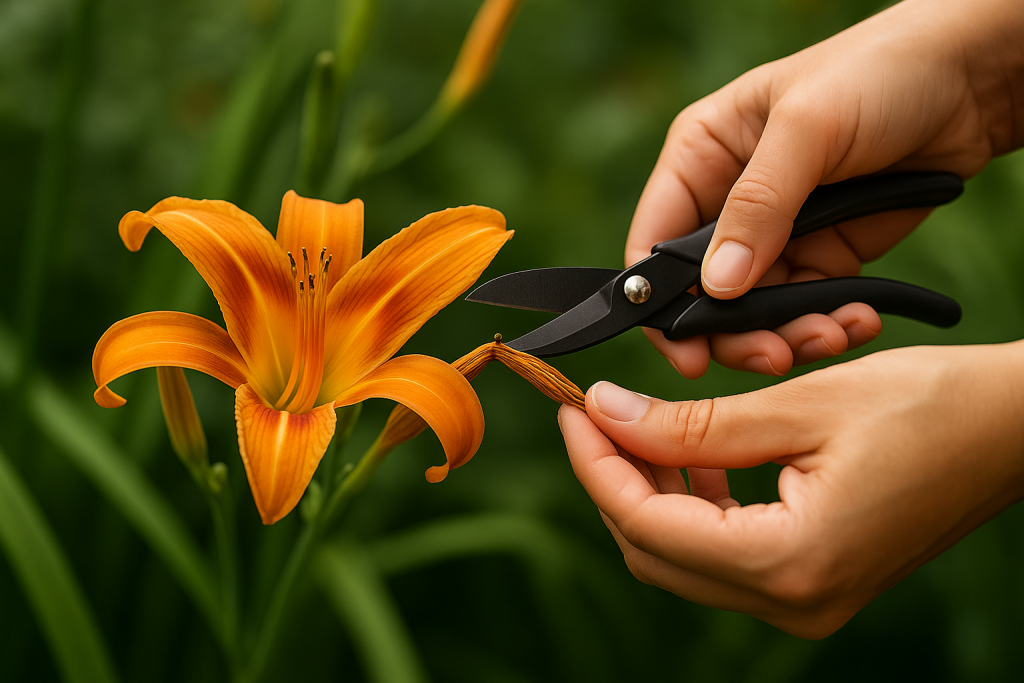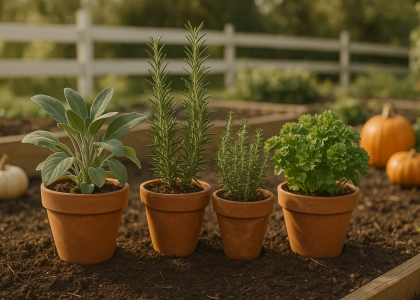Daylilies are some of the most beloved perennials worldwide. With trumpet-shaped blooms that last only a day but arrive in succession, these plants embody joy, resilience, and renewal. Beyond their ornamental beauty, daylilies have a rich history in cuisine and herbal medicine.
Learn how to grow, harvest, and benefit from daylilies while keeping your garden vibrant and balanced.
Botanical Overview
- Family: Asphodelaceae
- Scientific Name: Hemerocallis spp.
- Common Names: Daylily, Orange Lily, Tawny Daylily
- Plant Type: Herbaceous perennial
- Bloom Time: June – August (reblooming hybrids can extend into fall)
- USDA Hardiness Zones: 3–9

Appearance & Garden Value
- Foliage: Arching, grass-like leaves forming dense clumps.
- Flowers: Large, trumpet-shaped, in orange, yellow, red, pink, or bi-color forms.
- Each flower lasts only one day, but abundant buds provide continuous blooms.
- Highly adaptable, low-maintenance, and drought-tolerant.
- A cultural symbol of motherly love and the letting go of worries.
Cultivation & Care
- Light: Full sun (6+ hrs); tolerates partial shade.
- Soil: Loamy, fertile, well-drained soil.
- Watering: Deep watering once per week during bloom.
- Tips:
- Deadhead daily to encourage more flowers.
- Divide clumps every 3–4 years to rejuvenate growth.
- Mulch to retain soil moisture and suppress weeds.

Culinary & Medicinal Uses
- Edible Flowers: The buds of Hemerocallis fulva (“golden needles”) are used in soups and stir-fries in Asian cuisine.
- Nutritional Value: High in vitamin C, carotenoids, antioxidants, and dietary fiber.
- Traditional Chinese Medicine: Flowers and roots are used for detoxification, diuretic effects, and calming the mind.
- Healing Associations: Known as a natural mood stabilizer, daylilies have been linked to relieving insomnia and easing stress.
Potential Drawbacks
- Not all species are edible → Only specific varieties (e.g., H. fulva) are safe.
- Raw consumption may cause nausea or diarrhea. Always cook before eating.
- Toxic to cats → Ingestion can cause kidney failure. Keep away from pets.
- Can spread aggressively in moist conditions.
Common Pests & Diseases
- Daylily Rust → Yellow-orange spots on leaves. Control with fungicides and resistant cultivars.
- Aphids & Thrips → Sap-sucking insects that deform buds. Wash off or introduce ladybugs.
- Crown Rot → Caused by poor drainage; improve soil aeration.

Regional Care Tips
- Cold Climates (Zones 3–5): Mulch heavily in fall; choose hardy cultivars.
- Temperate Climates (Zones 6–8): Reblooming hybrids thrive with consistent deadheading.
- Hot Climates (Zones 8–9): Provide afternoon shade and increase watering during extreme heat.
FAQ
Q: Are daylilies edible?
A: Yes, but only certain species like H. fulva. Always cook before eating.
Q: Are daylilies safe for pets?
A: No. They are toxic to cats and may cause kidney failure. Dogs are less affected but should avoid them.
Q: How long does each flower last?
A: Just one day, but plants produce many buds, creating weeks of color.
Daylilies remind us of life’s fleeting beauty: each flower blooms for just a day, yet the plant thrives for decades. They bring nourishment to the body, calm to the mind, and resilience to the garden.
CTA
👉 Save this guide for your perennial garden.
👉 Follow Greenmuse for more healing plant wisdom.
👉 [Download the FREE Printable Daylily Care Guide PDF]





